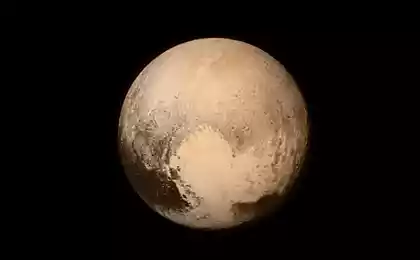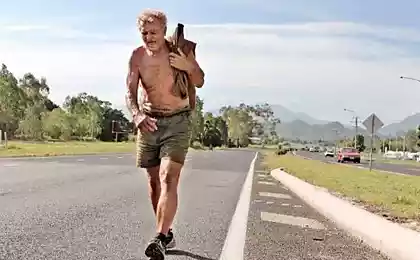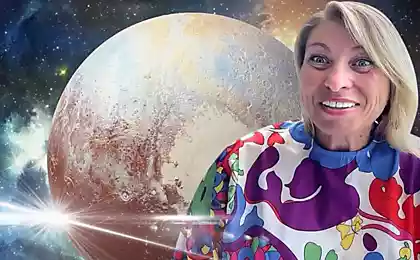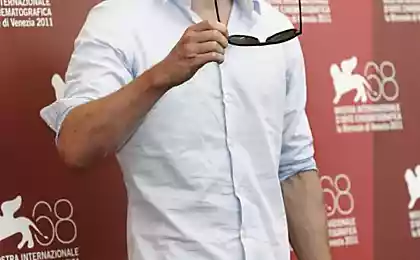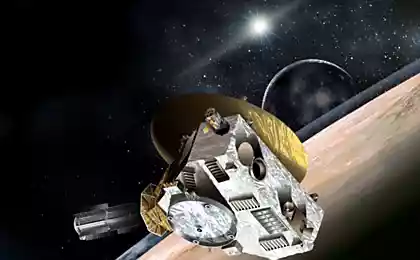649
Nine Planets: Pros and Cons
January 20th, 2016 newspapers, magazines, blogs, and websites of news spread through sensational news - scientists have discovered a new planet. Of course, more serious and specialized publications were expressed much more cautious - a new gas giant half the size of Neptune, as there is only a a computer model , which with a very high (but still not high enough to clearly declare the opening of) certainty explain anomalies in the orbits of several objects transplutonian.
Published an article by astronomers from Caltech Michael Brown and Konstantin Batygin , constantly emphasize that originally belonged to his models are very skeptical. The idea of the existence of a large planet at a distance of several hundred astronomical units from the Sun with a period of 10-20 thousand years originally arose as a way to explain the anomalous cluster of six bodies beyond the orbit of Pluto, which includes planetoid Sedna. The probability of random occurrence of such a grouping is only 0.007%.
The planet with a mass greater than the mass of the Earth, but smaller than Neptune, which revolves on the highly elliptical orbit, so that its perihelion is 180 degrees from the perihelion of this group explains its existence is better than all the other models. However, the "good theory must explain not only those things for which it came up with an explanation. It should also explain other known facts and let make testable predictions "- говорит Constantine Batygin.
"Brown-Batygina Planet" was able to explain not only the appearance of a cluster, but also anomalies orbit two objects out of it - Sedna and 2012, VP113. Unlike most of the Kuiper belt objects, experiencing the effects of gravity Neptune's orbit of Sedna and 2012 VP113 are arranged so that they are always very far away and can not experience any significant its effect. But unknown massive planet orbit explains them very well.
Finally, it was found that the model with the participation of such a planet due to the existence of another class Transpluto whose orbit is almost perpendicular to the ecliptic. Only then, scientists have decided to publish this article risky - this is not the first publication, justifying the existence of the " Planet X ", but so far it could not find.
Also successful mathematical model, to support the hypothesis of the ninth planet can cite several arguments of a statistical nature. The solar system is studied is not as good as it may seem after reading a school textbook of astronomy. It constantly discovering new objects, in particular, the six objects that served as the impetus for the creation of a model have been found in the XXI century, some - just a couple of years ago. At the time, Neptune, and Pluto and then opened it after their orbits have been calculated based on the analysis of anomalies in the movement of neighboring planets.
Lead author of the research, Professor Michael Brown - one of the most authoritative experts in the Kuiper belt, the winner of премии Kavli , to his credit - 36 open Transpluto, including Sedna and Eris.
Finally, the boom ekzoplanet openings in recent years suggests that the planet with a mass from 1 to 10 mass of the earth are the most common. The solar system on this background looked almost an anomaly. Perhaps it is not so abnormal.
In conclusion, I want to stress once again that the existence of the ninth planet until no more than a hypothesis , although it expressed by authoritative experts in the peer-reviewed magazine. Scientists have not yet "discovered" a new planet, but indicated another promising area of research. Sami Brown and Batygin believe that there is a good chance to really discover the planet (if it exists) in the next five years.
Source: geektimes.ru/post/269520/
Published an article by astronomers from Caltech Michael Brown and Konstantin Batygin , constantly emphasize that originally belonged to his models are very skeptical. The idea of the existence of a large planet at a distance of several hundred astronomical units from the Sun with a period of 10-20 thousand years originally arose as a way to explain the anomalous cluster of six bodies beyond the orbit of Pluto, which includes planetoid Sedna. The probability of random occurrence of such a grouping is only 0.007%.
The planet with a mass greater than the mass of the Earth, but smaller than Neptune, which revolves on the highly elliptical orbit, so that its perihelion is 180 degrees from the perihelion of this group explains its existence is better than all the other models. However, the "good theory must explain not only those things for which it came up with an explanation. It should also explain other known facts and let make testable predictions "- говорит Constantine Batygin.
"Brown-Batygina Planet" was able to explain not only the appearance of a cluster, but also anomalies orbit two objects out of it - Sedna and 2012, VP113. Unlike most of the Kuiper belt objects, experiencing the effects of gravity Neptune's orbit of Sedna and 2012 VP113 are arranged so that they are always very far away and can not experience any significant its effect. But unknown massive planet orbit explains them very well.
Finally, it was found that the model with the participation of such a planet due to the existence of another class Transpluto whose orbit is almost perpendicular to the ecliptic. Only then, scientists have decided to publish this article risky - this is not the first publication, justifying the existence of the " Planet X ", but so far it could not find.
Also successful mathematical model, to support the hypothesis of the ninth planet can cite several arguments of a statistical nature. The solar system is studied is not as good as it may seem after reading a school textbook of astronomy. It constantly discovering new objects, in particular, the six objects that served as the impetus for the creation of a model have been found in the XXI century, some - just a couple of years ago. At the time, Neptune, and Pluto and then opened it after their orbits have been calculated based on the analysis of anomalies in the movement of neighboring planets.
Lead author of the research, Professor Michael Brown - one of the most authoritative experts in the Kuiper belt, the winner of премии Kavli , to his credit - 36 open Transpluto, including Sedna and Eris.
Finally, the boom ekzoplanet openings in recent years suggests that the planet with a mass from 1 to 10 mass of the earth are the most common. The solar system on this background looked almost an anomaly. Perhaps it is not so abnormal.
In conclusion, I want to stress once again that the existence of the ninth planet until no more than a hypothesis , although it expressed by authoritative experts in the peer-reviewed magazine. Scientists have not yet "discovered" a new planet, but indicated another promising area of research. Sami Brown and Batygin believe that there is a good chance to really discover the planet (if it exists) in the next five years.
Source: geektimes.ru/post/269520/
